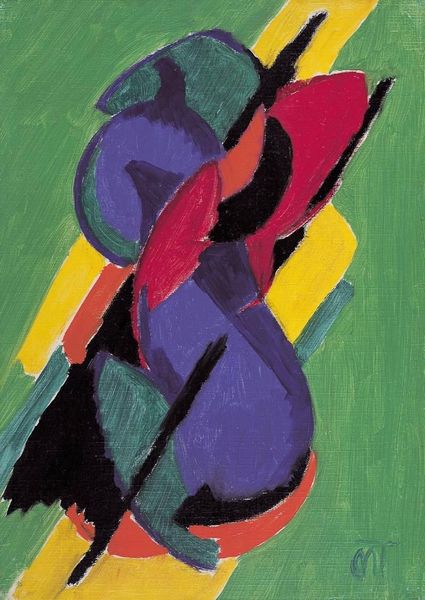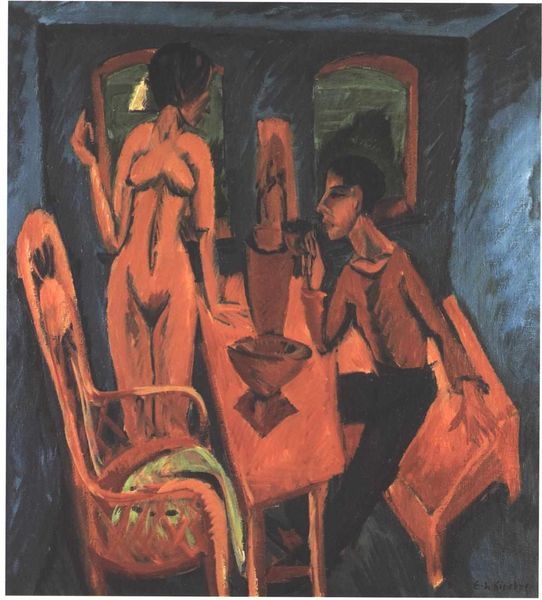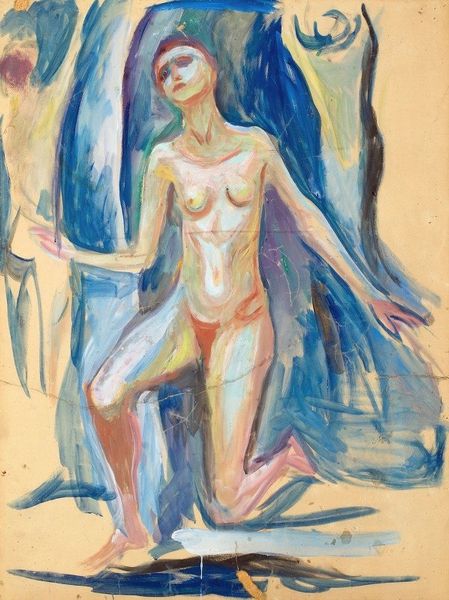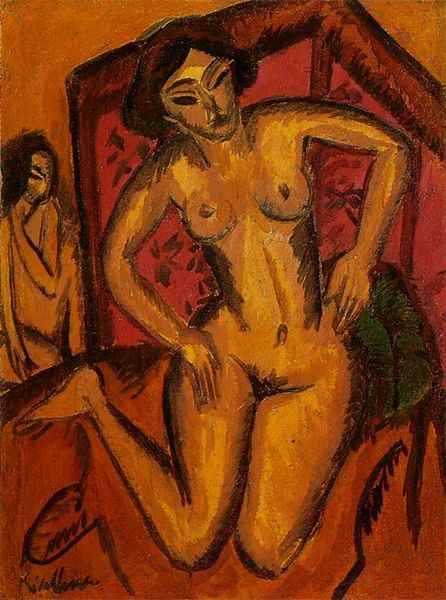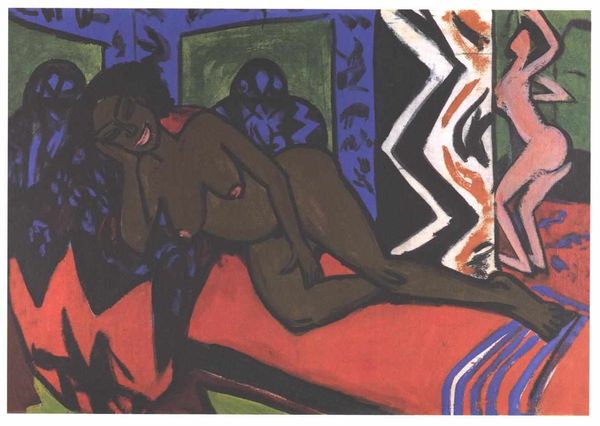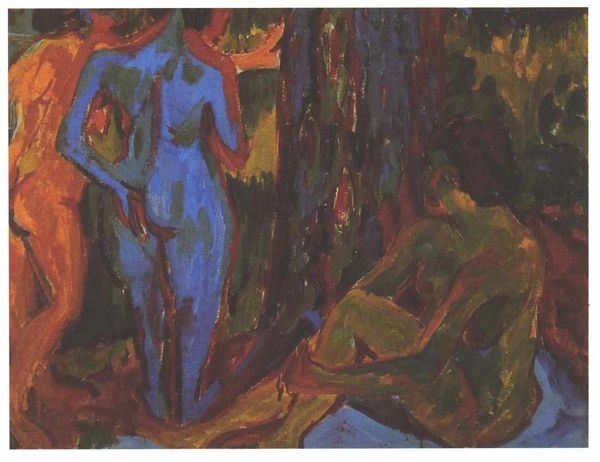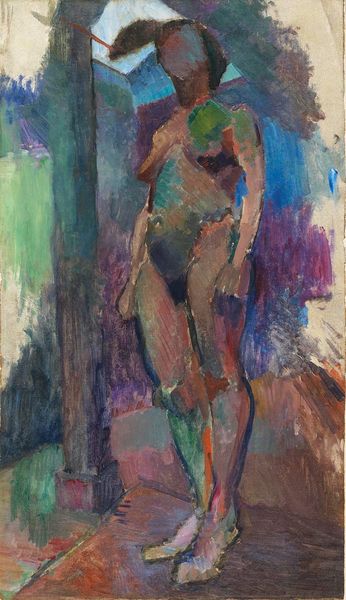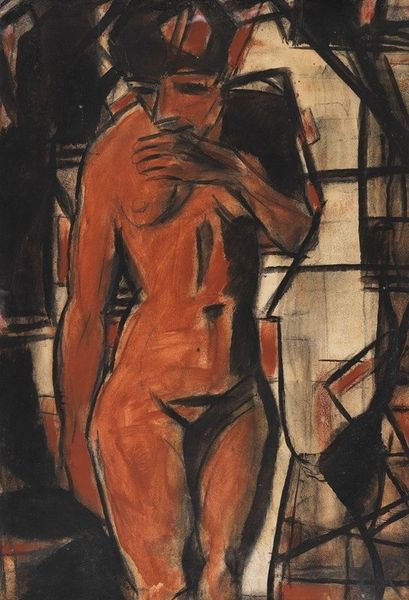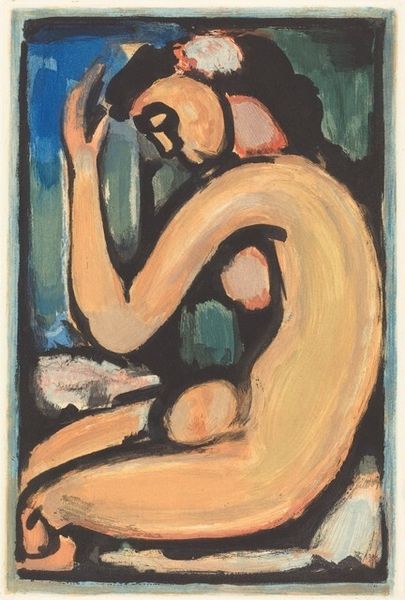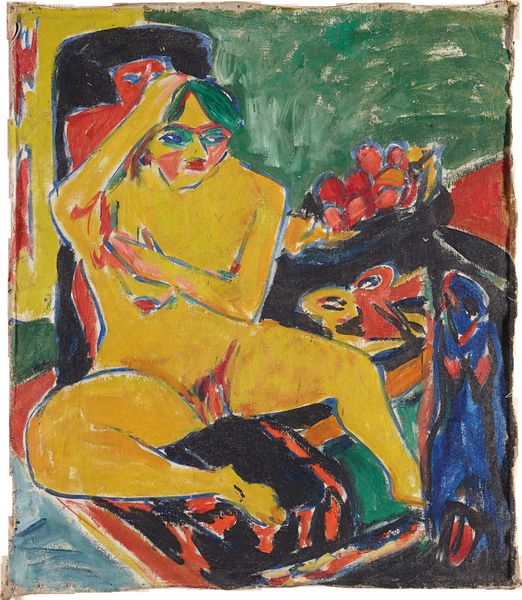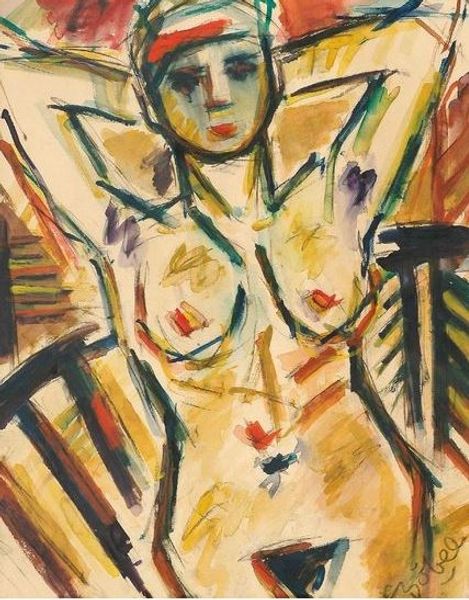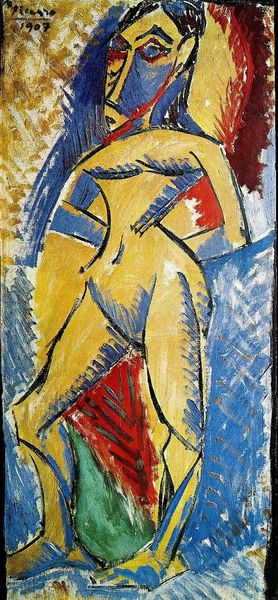
drawing, pastel
#
portrait
#
drawing
#
german-expressionism
#
figuration
#
form
#
female-nude
#
pastel chalk drawing
#
expressionism
#
portrait drawing
#
pastel
#
nude
Copyright: Public domain
Curator: Looking at this "Seated Female Nude" by Ernst Ludwig Kirchner, done in pastel, the immediacy of the work strikes me. It feels very raw and unburdened. Editor: Raw indeed! And evocative of its time. How interesting to see how Kirchner grapples with form through the lens of German Expressionism. The distortions, the clashing colors... Curator: I'm especially drawn to the pastel medium. The roughness gives it such a tactile quality. You can almost feel the artist's hand moving across the paper. Kirchner often prioritized directness of process over polished refinement, something central to the Die Brücke artists, right? Editor: Exactly. The work's sketch-like quality challenges academic conventions around portraiture, around the depiction of the nude. It really invites us to question the power structures at play when creating and consuming images of the human body. How were female figures portrayed in German art beforehand? What were the exhibition venues? These works caused quite the stir. Curator: I see it also in relation to Expressionist color theory. It departs from the realistic flesh tones. It's jarring, yes, but it intensifies the emotional impact. It shows us the possibilities of materials in capturing feeling. Editor: It's a rejection of naturalism, for sure. In doing so, Kirchner inserts this nude within the larger project of modernism and renegotiates Germany's artistic relationship with France and the artistic hubs of Europe. It reflects both a breaking away from tradition and a self-conscious construction of something "new" that spoke to its audience. Curator: I also love that it isn’t hyper-finished. There's a sort of workshop ethos embedded in the hurried feeling of it, like its creation had to be expressed as quick as it could before it got away from Kirchner himself. Editor: Indeed, the figure is so raw. Ultimately it represents a broader social shift happening in Germany at the time. These paintings and drawings acted as vehicles to voice a new, burgeoning sensibility. It serves as an invaluable historical record of a generation expressing and re-imagining itself, sometimes awkwardly, in public view. Curator: Agreed. The beauty in art isn't always what is visually apparent. Editor: Very true. The story behind its creation, the historical framework, provides an invaluable richness that deepens our understanding of it.
Comments
No comments
Be the first to comment and join the conversation on the ultimate creative platform.
